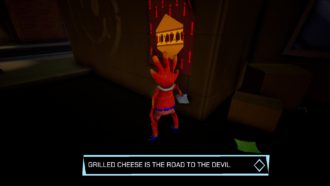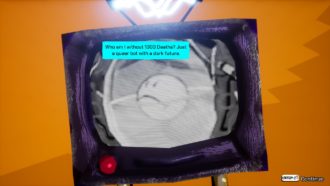Platforms:
PC, PS5
Released:
August 7, 2025
Publisher:
Pariah Interactive, Inc.
Developer:
Pariah Interactive, Inc.
1000 Deaths is a delightfully bizarre experience. From indie studio Pariah Interactive, it’s this strange mix of gravity-bending 3D platforming and distinct, drama-filled stories, almost like an alien Home and Away season, to be honest. At its psychedelic core, it delivers a surprisingly close-to-home tale about four people just going through life, dealing with all the ups and downs that friendships, drama, relationships and ambition bring… and also how they rely on this little TV creature to do sick tricks to push them to make decisions.
1000 Deaths starts you off with Vayu’s story. She’s this strange white-sheet ghost-looking thing that grows up to become some sort of sharp-toothed shark creature, I think? I don’t really know. She’s an alien, that’s for certain, as are all the main characters. They’ve all got crazy, nonsensical designs, halfway rooted in reality and halfway outta the door. Each design also evolves as it grows, which is a nice addition. When you see them and the NPCs peppered into the overall world, which is bursting with every colour under the sun, it’s a very unique visual experience, like wandering through a trippy, forgotten 3D cartoon from the 2000s. Paired with exceptional music, steady electronic songs matching the tone while also driving you forward with a heavy beat, it’s such a crazy vibe to hang out in.
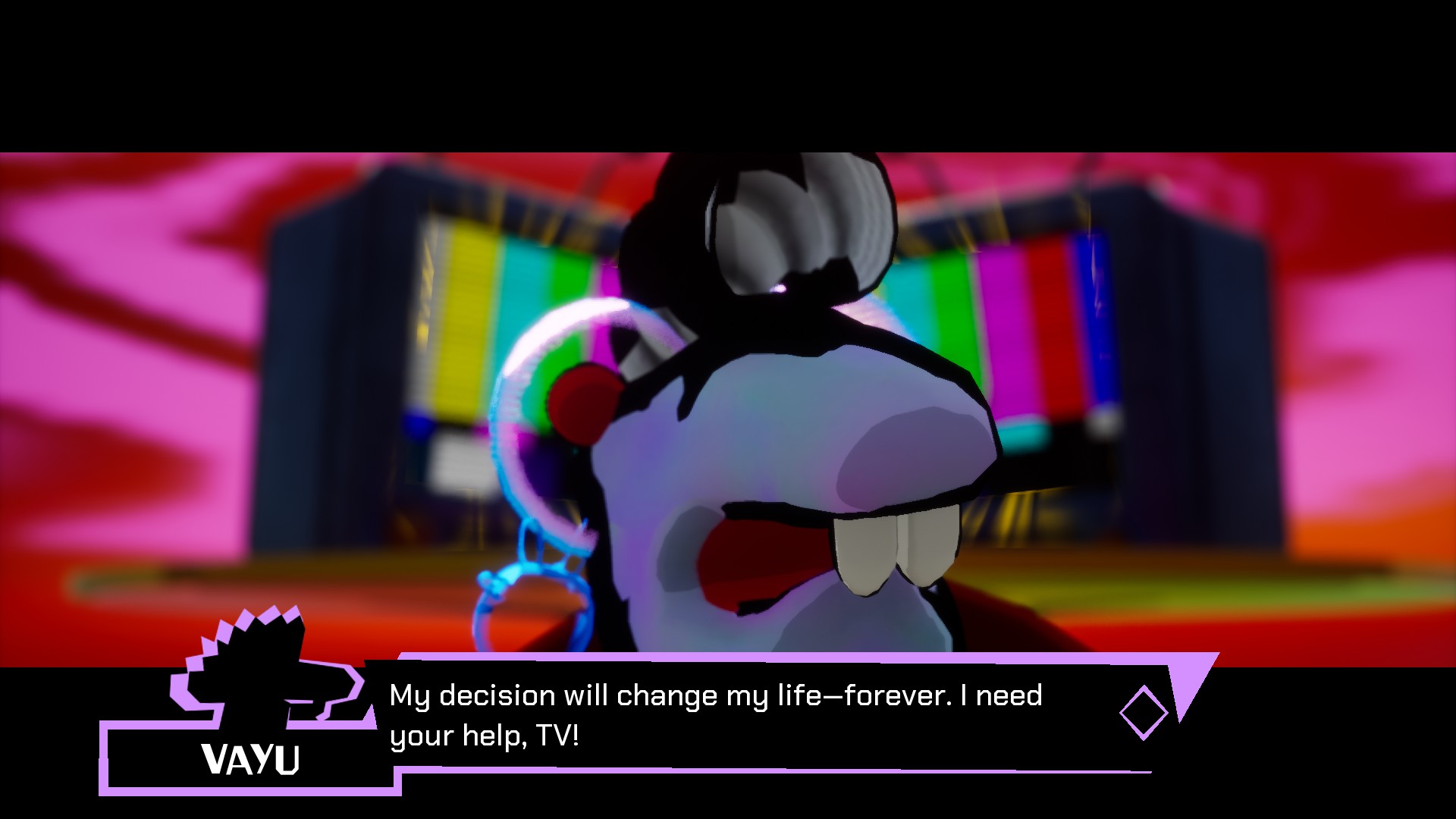
Vayu begins 1000 Deaths, reflecting on her life in the humble Nowherestown. Her life is full of missed opportunities and regrets, which is only amplified by her best friend, Maxie, a flaming-red axolotl-adjacent creature. Maxie left their sleepy hometown behind for a flashier, more exciting life in Jollywood. As Vayu reminisces, she’s given a chance to change her past and rewrite her future.
The game is split into three episodes that follow the main characters, like Vayu. Each offers key moments in the character’s life where you get to decide for them. These moments place you in their headspace, a nonsensical space that represents the character’s psyche. As the small TV character, you’ll run about these zones and find doors that lead to platforming puzzles. Completing them all lets you approach the two large TVs at the end of headspace as the current character, and make a choice for them.
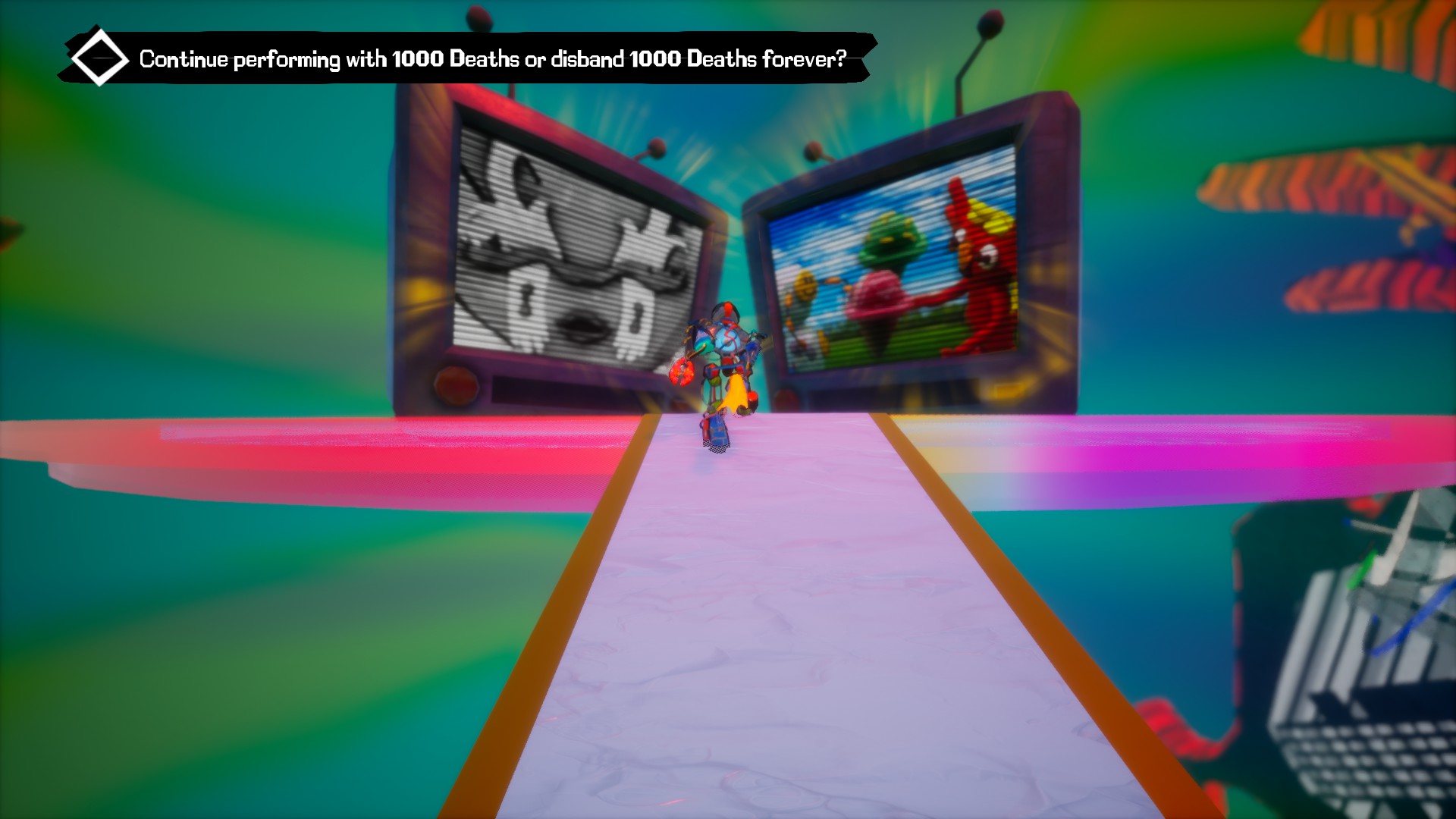
It’s grounded, relatable stories that are focused on in 1000 Deaths. You can have Vayu choose to move to Jollywood with Maxie, and with it, she’ll gain the upside of living in a big city. She’ll also have to work extremely hard to cover both her and Maxie’s rent since Maxie’s taking advantage of her. Other characters face similar emotional dilemmas, having to deal with choosing between working with a friend or pursuing their own path, or deciding whether to open themself up to love or bury those feelings. For all its cosmic weirdness and all its wild aesthetic exterior, it’s strikingly real.
Each episode begins with an initial exploratory segment, which ends with you being launched into your first headspace. From your choice in that headspace, the story can branch into two different paths. These two paths also have their own exploration moments, where you see how the character’s life played out after you made their decision. There’s yet another exploration moment after a final headspace that will determine how the character’s life ends. This means that each episode has the potential of four endings. It’s a clever way to blend narrative and gameplay, as each headspace also introduces different platforming puzzle segments and mechanics.
That being said, though, the system isn’t quite as deep as it could be. Realistically, you make one decision at the start, and one other choice that changes how the episode wraps up with the character’s demise. After it’s done, you roll back in time and move on to a new episode with a different character, starting the same process again. I found myself wishing the episodes were more interconnected, with choices carrying over and influencing future arcs. Sure, that would add complexity, but it would also make the narrative feel more rewarding than it currently does.
The pacing, too, felt rushed. While the narrative was heartfelt and the characters felt genuine, it definitely moves too quickly, not giving you enough time to sit with the choices you’ve made in the headspaces. It’s jarring. One moment you’re exploring, the next moment you’re locked into platforming in headspace to make your next big decision. Let me breathe and process! Let me sit with the emotional weight of turning Boga into a full-time Twitch streamer, damn it.

Growing up, I spent a lot of time in after-school care, hogging our shared, battered PS2 and playing the hell out of the very few games at my disposal. A lot of those games were old, classic 3D platformers. 1000 Deaths really took me back to that time with its platforming feel. Even in the calmer moments, it still channels that charm. When you’re running about in exploration moments, finding hidden secrets with the characters, despite minimal movement abilities, it felt straight ripped out of something like SpongeBob SquarePants: Battle for Bikini Bottom, another classic. The vibe of the movement just hit the nostalgia right on the head for me.
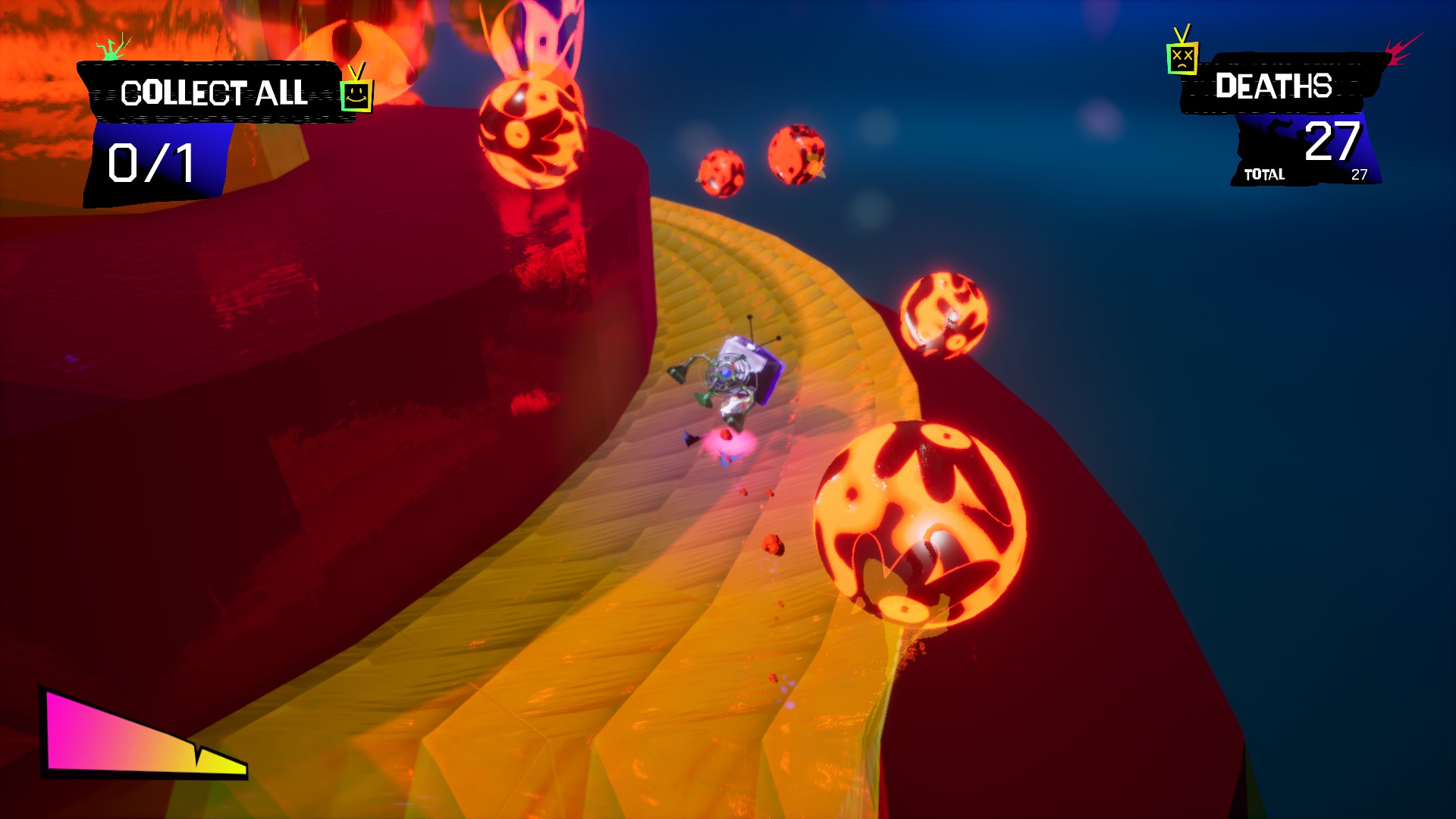
Each platforming level is bite-sized, typically lasting anywhere from a few seconds to a minute once you’ve wrapped your head around the level’s gimmick. You’ll need to run along curved walls to flip your sense of up and down and leap between angled platforms to twist gravity. You’ll find yourself pausing spinning platforms to make pathways, bouncing across surfaces, breaking through fragile tiles or dodging flaming orbs of death and destruction spinning about the map. Each level feels like a unique experience to conquer, and when you do, it feels well-earned, most of the time. Some levels did feel disappointingly simple, but that was only a small few of the large variety.
1000 Deaths even has a speed running hook to its platforming, with trophies awarded based on how quickly you clear levels. You don’t ever have to make certain times to progress the story; it’s simply an optional extra for those interested, which is nice. It reminded me of my Neon White arc, obsessively shaving seconds off for a better time. The best place to dive into this is the Arcade mode, where you can play levels you’ve unlocked, over and over, chasing your ghost. I don’t think I’ll be making it as a 1000 Deaths speed runner any time soon, though, as the qualifying times are quite brutal. It’ll be impressive to see it done, but it won’t be done by me, that’s for certain.
What impressed me was how smooth the platforming felt. With so many moving parts, especially due to the gravity changing as you walked around and jumped about, you’d expect some jankiness, but there really wasn’t any. Movement was tight and responsive, I didn’t ever find myself fighting for control of my camera and, most importantly, my deaths always felt fair.
The only downside is that your available moveset for movement stays the same throughout your playthrough. You have a jump, a dash and a ground-pound, and that’s it for the entirety of your time playing 1000 Deaths. Despite the interesting levels, your movement becomes formulaic at a point. If it ain’t broke, don’t fix it, of course, but I wish your moveset evolved as you progressed, or changed slightly with each episode.
Regardless, 1000 Deaths is overall a fulfilling platforming experience. It has a difficulty to it, especially with the added timed trophies you can aim for, but it never feels insurmountable, which I appreciated. It doesn’t reinvent the platformer, of course, but it does offer something reminiscent of the old classics.
7
Good
Positive:
- Fun, varied platforming puzzles with sick gravity-bending gimmicks
- Freaky, colourful aesthetic
- Optional speed running trophies for those who want a serious challenge!
Negative:
- Shallow choice system that feels isolated across the episodes
- Narrative pacing issues
- Repetitive moveset that doesn't evolve
1000 Deaths feels like it’s a crazy fever dream I had in the early 2000s after falling asleep in front of the TV. I mean this in the best way possible. Filled with fun levels, genuine heart and a killer, crazy aesthetic, if you’re looking for a colourful experience reminiscent of classic 3D platformers, this is for you.
